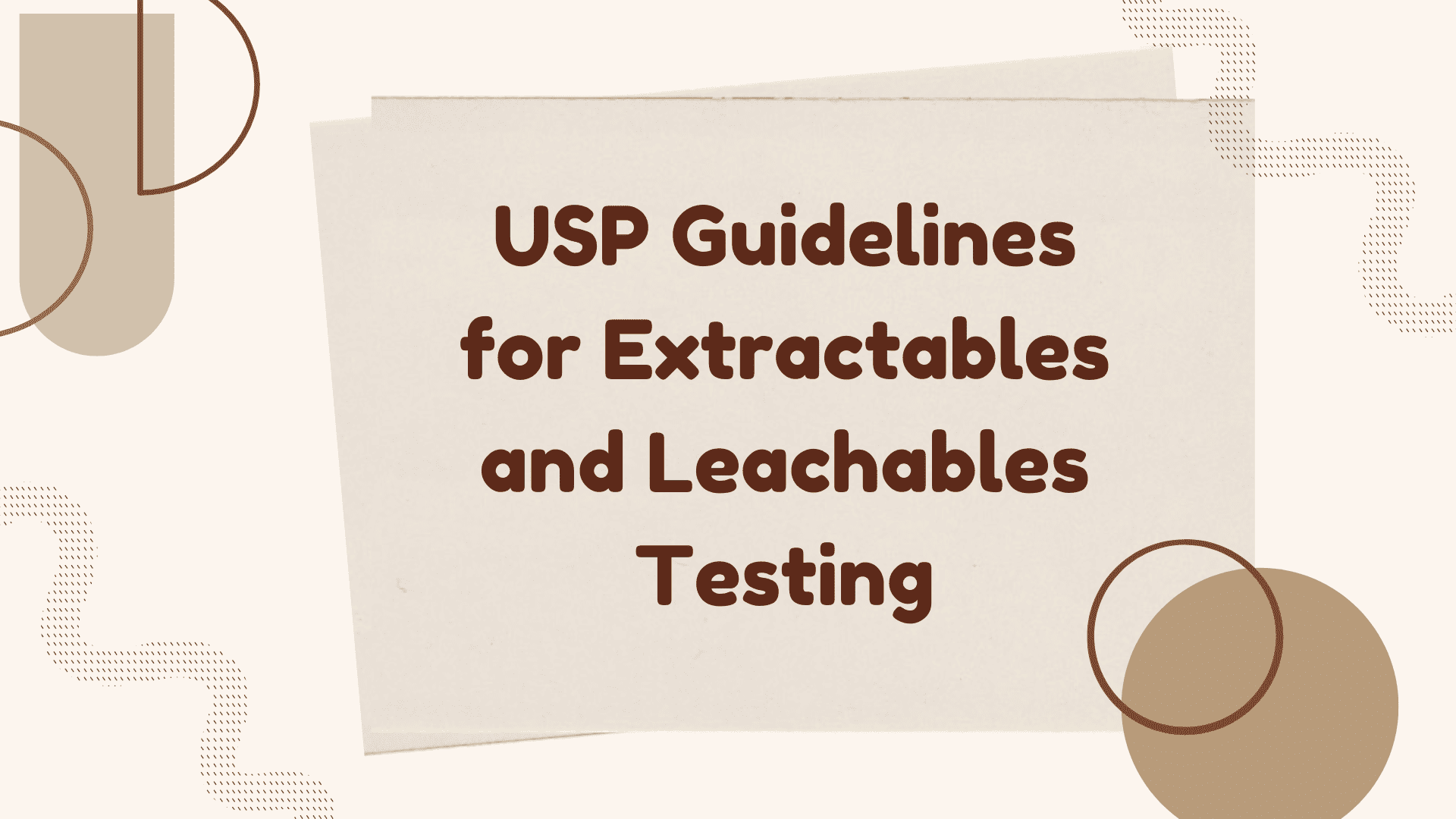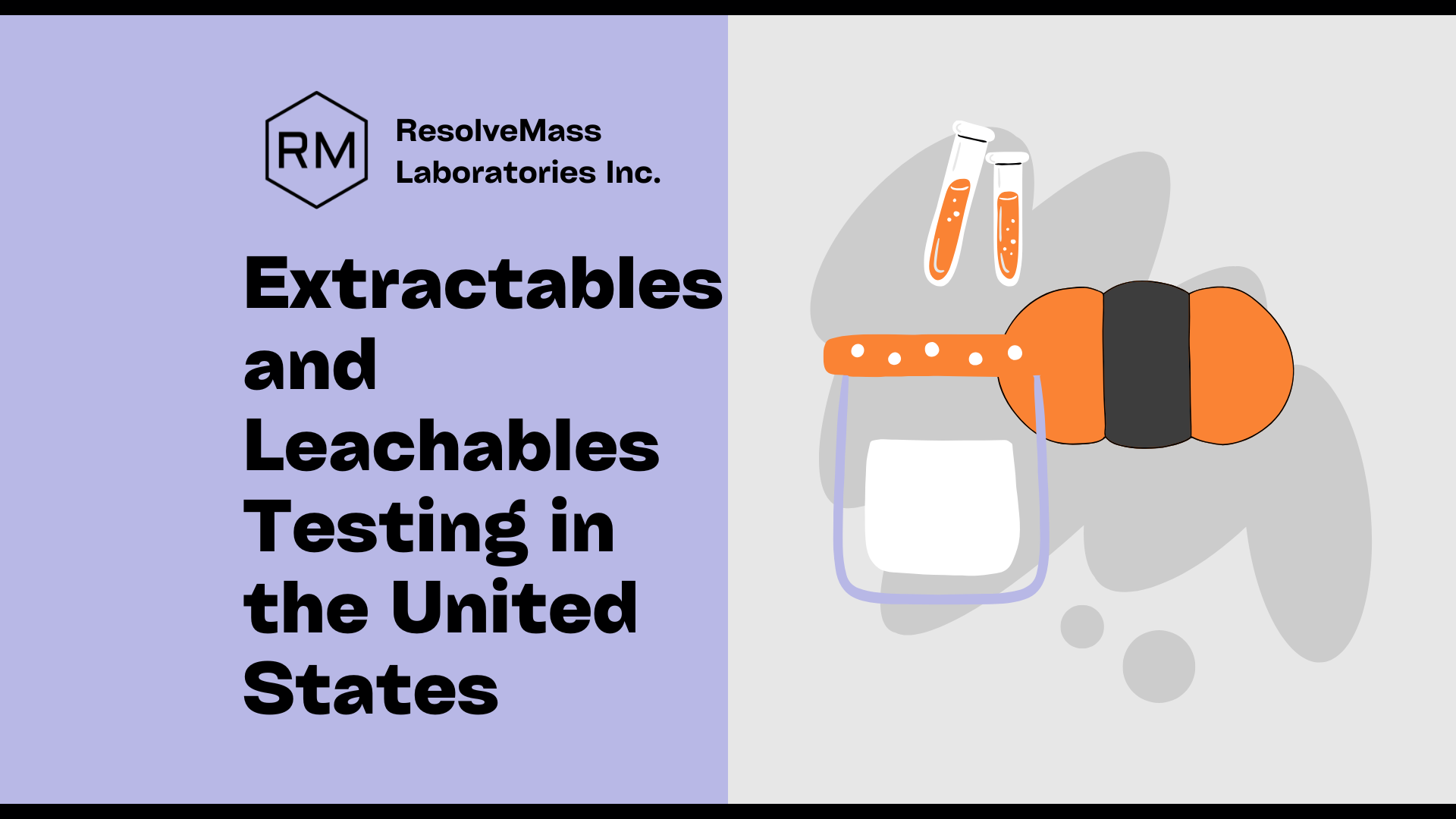Introduction
USP Extractables and Leachables (E&L) testing is one of the most important steps in ensuring the safety of pharmaceutical packaging, medical devices, and biologics. These guidelines help identify and measure any chemical compounds that may migrate from packaging materials or container closure systems into a drug product. By setting a standardized framework, the USP guidelines give manufacturers a trusted pathway to protect patients, achieve regulatory approval, and maintain consistent product quality.
At ResolveMass Laboratories Inc., we specialize in USP <1663> extractables testing and USP <1664> leachables studies. Our scientific expertise allows pharmaceutical companies, device manufacturers, and biotech firms to meet global compliance standards with confidence. By applying advanced methods, we ensure safety risks are minimized, patient health is protected, and regulatory acceptance is achieved.
Summary of Key Points
- USP Extractables and Leachables testing evaluates chemical risks from packaging and device components.
- USP <1663> defines extractables studies, while USP <1664> explains leachables studies.
- Extractables = potential compounds under stressed conditions.
- Leachables = actual risks seen in real-world product use.
- Following USP guidelines ensures compliance, safety, and reduced product risk.
- ResolveMass Laboratories delivers complete E&L testing, regulatory documentation, and expert support.
By carrying out these steps, manufacturers reduce costly delays, prevent recalls, and build stronger trust in their products across international markets.
What Are USP Extractables and Leachables?
Extractables are compounds released from packaging, container closures, or device materials when exposed to forced stress conditions in a laboratory. Leachables, on the other hand, are the compounds that migrate into a drug or patient-contacting solution during normal use and storage.
In simple terms:
- Extractables = potential risks under stress.
- Leachables = actual risks in real-world use.
This distinction forms the basis of USP Extractables and Leachables testing. Both assessments are critical for uncovering hidden risks, protecting patient health, and ensuring safe drug delivery systems.
Why Are USP Guidelines for Extractables and Leachables Testing Important?
USP guidelines are essential because they create a uniform, scientifically validated approach to chemical safety testing. The guidelines focus on four major areas:
- Patient Safety – Preventing contamination from harmful compounds.
- Regulatory Compliance – Meeting FDA, EMA, and global standards.
- Risk Management – Identifying hazards before approval.
- Product Quality – Protecting drug stability and effectiveness.
👉 Learn more in our FAQs on E&L testing.
Beyond compliance, these guidelines build trust with regulators, manufacturers, and patients. They provide evidence-based assurance that products are safe, reducing disputes during inspections or submissions.
USP 1663: Assessment of Extractables
USP <1663> sets the framework for testing extractables under worst-case scenarios. It guides how to:
- Define controlled extraction conditions.
- Use advanced techniques (LC-MS, GC-MS, ICP-MS).
- Simulate exaggerated use environments.
- Prioritize compounds for toxicological assessment.
📌 See our controlled extractables study services.
By identifying extractables early, companies can design safer packaging and reduce the chance of chemical release. This proactive step strengthens drug safety and helps avoid regulatory challenges.
USP 1664: Assessment of Leachables
USP <1664> focuses on the real-world risks of leachables. It requires companies to:
- Monitor leachables throughout the product’s lifecycle.
- Define and apply an Analytical Evaluation Threshold (AET).
- Use sensitive and validated quantification methods.
- Correlate data between extractables and leachables.
📌 Read about Analytical Evaluation Threshold in E&L.
This ensures ongoing product safety from manufacturing through expiry. By connecting laboratory data with real-life conditions, manufacturers maintain long-term product integrity.
USP Guidelines E&L: Key Steps
A simplified E&L testing workflow includes:
| Step | Description | Example Technique |
|---|---|---|
| 1. Material Assessment | Identify packaging/device materials | FTIR, DSC |
| 2. Extractables Study (USP 1663) | Simulate worst-case chemical release | GC-MS, LC-MS |
| 3. Leachables Study (USP 1664) | Detect real compounds in product | ICP-MS, HPLC |
| 4. Toxicological Risk Assessment | Compare against safety thresholds | TTC, PDE |
| 5. Reporting & Submission | Prepare FDA/EMA dossiers | E&L regulatory reports |
👉 See our regulatory submission E&L services.
This structured approach ensures data is transparent, traceable, and aligned with global regulatory expectations.
ResolveMass Laboratories’ Expertise in USP Extractables and Leachables
At ResolveMass, we provide end-to-end USP Extractables and Leachables testing services, including:
- Medical Devices – E&L testing for device materials.
- Pharmaceutical Packaging – Tailored study designs.
- Biologics – Multi-matrix assessments.
- Fast Turnaround – Quick and cost-effective testing.
- Regulatory Guidance – Compliance with FDA, EMA, ISO 10993-18.
With advanced technology and deep scientific knowledge, we help companies minimize risks and accelerate approvals.
Common Applications of USP Extractables and Leachables
E&L testing is critical across a variety of healthcare products, such as:
- Pre-filled syringes and injectable vials.
- Biologic drug formulations.
- Combination products (drug-device).
- IV bags, infusion systems, and tubing.
- Inhalation and nebulizer systems.
📌 Read about E&L testing for FDA guidance.
Standardized testing ensures that as new packaging solutions emerge, they continue to meet safety requirements without compromising performance.
Conclusion
USP Extractables and Leachables testing is vital for ensuring safety in pharmaceuticals and medical devices. By following USP <1663> for extractables and USP <1664> for leachables, companies protect patients, meet regulatory requirements, and maintain product integrity.
At ResolveMass Laboratories Inc., we deliver expert testing, advanced technology, and regulatory support to help clients succeed at every stage of E&L testing.
📌 Get in touch with our experts today.
FAQs: USP Extractables and Leachables Testing
Extractables are chemical compounds that may be forced out of packaging or device materials under extreme laboratory conditions, showing potential risks. Leachables, however, are the actual compounds that migrate into a drug or solution during real-world use. Together, USP guidelines for extractables and leachables provide a full picture of product safety and patient protection.
USP <1663> is important because it helps identify every possible extractable before a product reaches patients. By simulating worst-case conditions, it gives manufacturers a clear understanding of what chemicals could migrate from packaging. This early step ensures companies can design safer systems and reduce regulatory concerns later in development.
USP <1664> confirms product safety in actual use by testing for leachables throughout the lifecycle of the product. It ensures that no harmful chemicals migrate into a drug during storage, handling, or administration. This guideline bridges the gap between lab simulations and real-world risks, offering strong reassurance of patient safety.
E&L studies apply a wide range of advanced analytical techniques, including GC-MS, LC-MS, ICP-MS, HPLC, and NMR. Each method helps detect different classes of compounds, from volatile to heavy metals. By combining these tools, laboratories generate a complete chemical profile for risk evaluation and regulatory approval.
Yes, E&L testing is required for medical devices that come in direct or indirect contact with drugs or patient fluids. Regulators demand this data to prove that devices do not release harmful chemicals during use. At ResolveMass, our CRO services provide compliant and reliable E&L studies for medical device manufacturers.
The AET is calculated using toxicological reference values such as the Threshold of Toxicological Concern (TTC) or Permitted Daily Exposure (PDE). This threshold defines the minimum level at which a compound must be reported. Establishing an accurate AET ensures that no potentially harmful compound is overlooked during safety assessments.
If extractables are found above acceptable limits, manufacturers must perform a detailed risk assessment to evaluate patient safety. In some cases, packaging materials may need reformulation or replacement to reduce migration risks. Taking early corrective actions helps avoid costly recalls and ensures regulatory approval is not delayed.
Yes, both the FDA and EMA expect companies to follow USP <1663> and <1664> guidelines. These standards provide a harmonized approach to safety testing and are recognized worldwide. Compliance not only supports regulatory acceptance but also strengthens confidence in product safety across global markets.
References
- International Council for Harmonisation of Technical Requirements for Pharmaceuticals for Human Use. (2025). ICH Q3E: Extractables and leachables (Step 2 draft guideline). ICH. https://database.ich.org/sites/default/files/ICH_Q3E_EWG_Step2_DraftGuideline_2025_0704.pdf
- Rozio, M. G. (2025). Correcting detection and quantitation bias in extractables and leachables testing. Journal of Pharmaceutical Sciences, 114(4), 1234–1245. https://doi.org/10.1016/j.xphs.2025.01.001
- Balfour, H. (2022, April 29). Advancing extractables and leachables testing. European Pharmaceutical Review. https://www.europeanpharmaceuticalreview.com/article/170814/advancing-extractables-and-leachables-testing/
- Eckford, C. (2024, January 22). Single-use systems to drive E&L testing market growth. European Pharmaceutical Review. https://www.europeanpharmaceuticalreview.com/news/196367/single-use-systems-to-drive-el-testing-market-growth/

